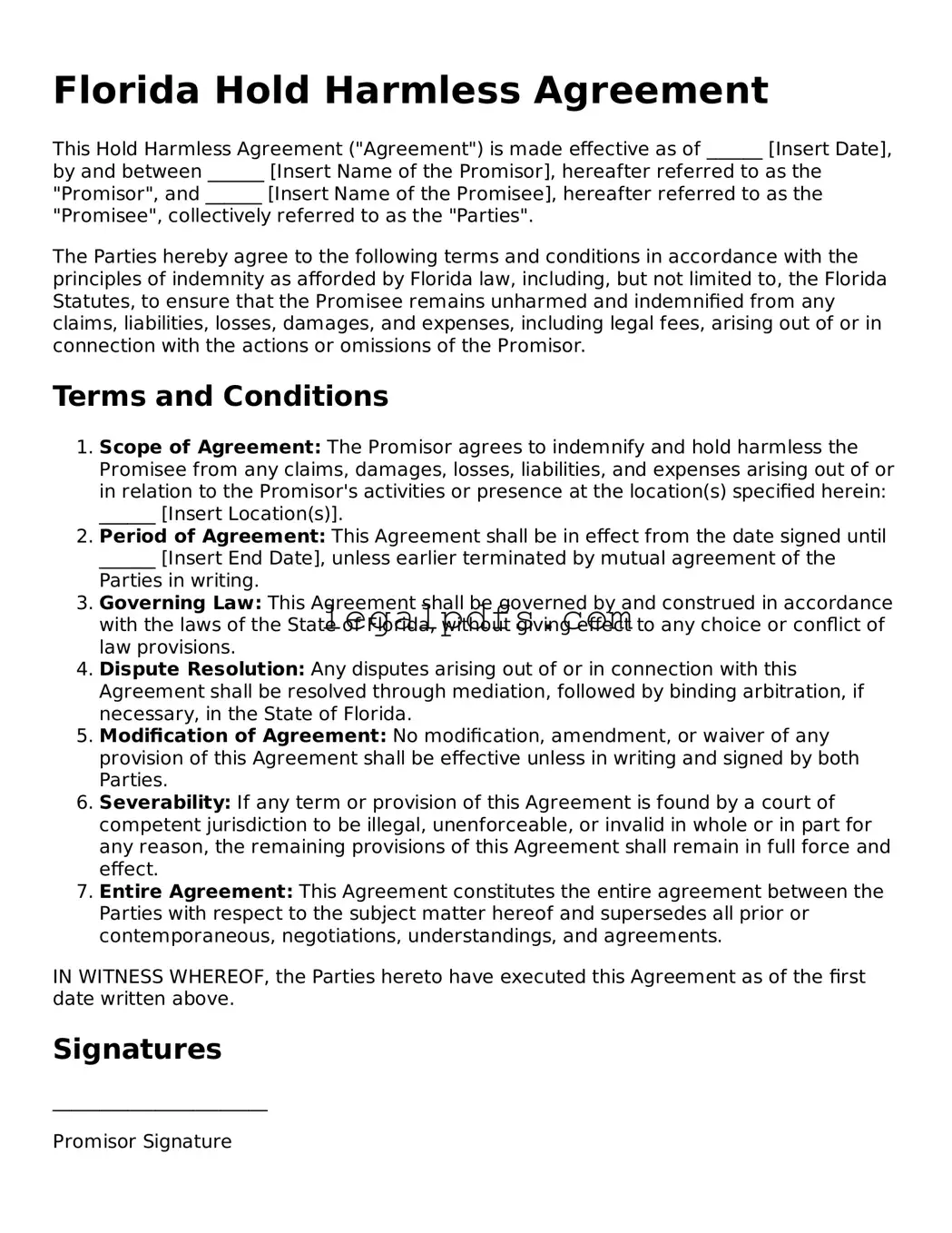What is a Florida Hold Harmless Agreement?
A Florida Hold Harmless Agreement is a legal document used to protect one party from liability for any injuries or damages caused to another party. This type of agreement is common in situations where there's a risk of physical harm or property damage, ensuring that the party providing a service, using property, or participating in an activity, cannot be held liable for potential risks involved.
Who needs a Florida Hold Harmless Agreement?
Anyone involved in activities or providing services that could potentially lead to accidents, injuries, or damages may need a Hold Harmless Agreement in Florida. This includes contractors, property owners leasing their premises, event organizers, and businesses involved in high-risk activities. It's a proactive measure to manage liability and protect against claims.
Are there different types of Hold Harmless Agreements in Florida?
Yes, there are generally three types of Hold Harmless Agreements: broad form, intermediate form, and limited form. The broad form covers all liabilities, including those resulting from the other party's actions. The intermediate form covers liabilities only if the party protected under the agreement is partly at fault. The limited form, on the other hand, covers liabilities only if the party protected is solely at fault. The type used can vary based on the agreement and situation at hand.
How does a Hold Harmless Agreement protect me?
A Hold Harmless Agreement protects you by legally ensuring that another party cannot sue you for injuries, damages, or losses that occur in relation to the activity or service covered by the contract. It shifts the risk from one party to another, often accompanied by insurance to cover potential claims. It's a form of risk management that helps both parties understand and agree on who is responsible for what.
Is a Florida Hold Harmless Agreement legally enforceable?
Yes, when properly executed, a Florida Hold Harmless Agreement is legally enforceable. However, its enforceability can depend on several factors, including the clarity of its terms, the fairness and reasonableness of the agreement, and compliance with Florida law. Agreements that are overly broad or violate public policy may not be upheld in court.
What should be included in a Florida Hold Harmless Agreement?
A comprehensive Florida Hold Harmless Agreement should include clear identification of the parties involved, a detailed description of the activity or service being provided, the risks assumed by the party signing the agreement, the scope of the protection against liability, any limitations or conditions, and the duration of the agreement. Signatures from all parties involved are also necessary to ensure the agreement is binding.
Can a Hold Harmless Agreement be modified?
Yes, a Hold Harmless Agreement can be modified if both parties agree to the changes. It's important that any modifications are made in writing and signed by both parties. This ensures that the agreement remains enforceable and reflects the current understanding and agreement between the parties.
Are Hold Harmless Agreements common in all industries?
While not common in every industry, Hold Harmless Agreements are prevalent in many sectors involving physical activities, use of property, or provision of services where there's a significant risk of injury or damage. Construction, real estate, sports, and events management are a few examples where these agreements are frequently used.
What happens if someone is injured and there's a Hold Harmless Agreement in place?
If someone is injured and a Hold Harmless Agreement is in place, the agreement generally protects the party that has been held harmless from liability, meaning they would not be responsible for damages or legal claims. However, the outcome may vary based on the specific terms of the agreement and the circumstances of the injury. It may also depend on whether the agreement is supported by proper insurance policies.
Should I consult a lawyer before signing a Hold Harmless Agreement in Florida?
Yes, it's wise to consult a lawyer before signing a Hold Harmless Agreement in Florida. A lawyer can help you understand the terms of the agreement, ensure that it is fair and complies with Florida law, and advise you on any potential risks. Getting legal advice can help you make informed decisions and protect your interests.
